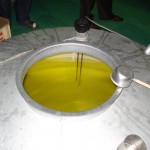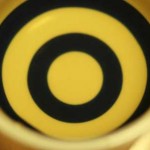Most sake is, when we get it, close to transparent. But it was not always this way, and that statement is meant both in terms of one given sake, and sake in general over history.
 When sake is first born, i.e. separated from the rice lees after a month-long fermentation, it has a lovely light amber tint to it; in fact, some just-pressed sake can have almost a green tint to it that is indeed truly beautiful.
When sake is first born, i.e. separated from the rice lees after a month-long fermentation, it has a lovely light amber tint to it; in fact, some just-pressed sake can have almost a green tint to it that is indeed truly beautiful.
However, sake is soon stripped of that via charcoal filtration. Active powdered charcoal is mixed into the sake (temporarily turning it ink-black!), and when that is filtered out it removes the coloring aspects to some degree, as well as some rougher flavors. This is a surprisingly precise operation, and can be adjusted fairly minutely. It can also be overdone, not surprisingly.
Why is this done? Because color in sake somehow, sometime, somewhere along the line became associated with something less than full purity and freshness. Shame, that. To be sure, sake does take on color as it ages, but the presence of color does not necessarily indicate age or roughness. Not at all.
Has it always been this way? Heaven’s no. It all began, goes the word on the sake-street,  about 40 or 50 years ago in Niigata, and soon caught on all over the industry. And to be fair, there are some sake out there that are not charcoal filtered, and as such proudly display that goldenrod luster. Such sake will often (but not obligatorily) have “muroka” (unfiltered, slight misnomer though it may be) on the label. Muroka, for our intents and purposes, means “not charcoal filtered,” and usually will maintain the original amber-green-goldenrod tint. It’s natural, and its beautiful.
about 40 or 50 years ago in Niigata, and soon caught on all over the industry. And to be fair, there are some sake out there that are not charcoal filtered, and as such proudly display that goldenrod luster. Such sake will often (but not obligatorily) have “muroka” (unfiltered, slight misnomer though it may be) on the label. Muroka, for our intents and purposes, means “not charcoal filtered,” and usually will maintain the original amber-green-goldenrod tint. It’s natural, and its beautiful.
There are still a couple of seats remaining open for the Sake Professional Course in  Japan, the most thorough sake education on the planet. Five days of sake bliss: learning, tasting, eating and visiting breweries. Held in Tokyo with a trip to the Kyoto-Osaka-Kobe area. Learn more at http://www.sake-world.com/html/spcjapan.html
Japan, the most thorough sake education on the planet. Five days of sake bliss: learning, tasting, eating and visiting breweries. Held in Tokyo with a trip to the Kyoto-Osaka-Kobe area. Learn more at http://www.sake-world.com/html/spcjapan.html




